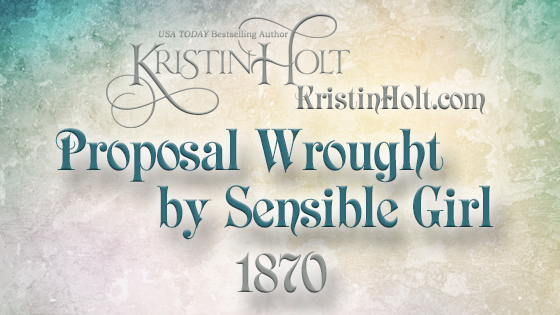
Proposal Wrought by Sensible Girl (1870)
Tale of marital success from The Osage County Chronicle, Burlingame, Kansas, January 1870.
In one simple statement, she convinced her longtime beau to propose marriage. Sensible girl, indeed!

Tale of marital success from The Osage County Chronicle, Burlingame, Kansas, January 1870.
In one simple statement, she convinced her longtime beau to propose marriage. Sensible girl, indeed!
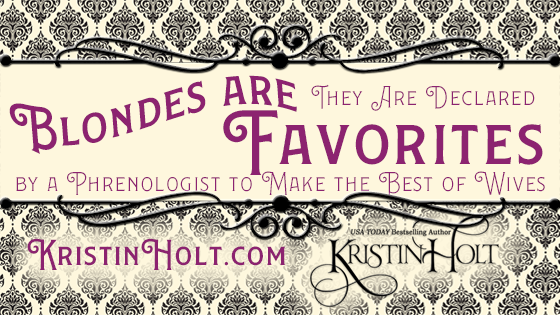
A well-known New York Phrenologist gives late-Victorian-era American romance advice. “Blondes are Favorites,” he declared, backing up this observation with Phrenology. Much hymeneal wisdom packed into one interview, contained in the vintage newspaper article that sprang from a newspaperman interviewing the phrenologist. While affable blondes are best, beware of “Women of Genius” (those inclined to education and adopting “masculine” attributes such as self-protection and self-support). Victorian attitudes and perspectives circa 1890 shed much light on cultural norms.
Part of blog series: Who Makes the Best (Victorian) Wives?
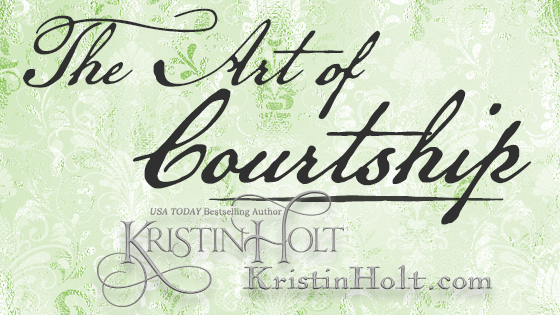
The Art of Courtship: Vintage wisdom relayed from the mid-nineteenth century to a newspaperman thirty years later (in 1887) sheds light on choosing a wife, beginning a courtship, different types of girls (shy, coquette [flirt], “vidders” [widows], and old maids, etc.). Victorian attitudes are prevalent, including the general idea that the sick and infirm aren’t suitable to marriage (think of the children!). Everything you wished your great-great grandpa had told you about courting… and more.
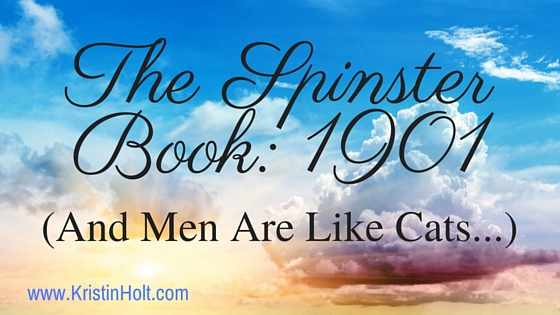
“A cross between guidebook and social commentary, The Spinster Book gives clever and humorous insights on topics such as courting, handling men and women, love letters, marriage and spinsterhood.” I share one of the book’s vignettes on men; how they compare to cats…and a most successful way (for a Victorian lady, at least) to win a man’s heart, an invitation to a live theater or opera production, and his undying adoration. The book was published in 1901. The author (Myrtle Reed)’s sense of humor shines through, and sheds more than a little light on Victorian attitudes about courtship.
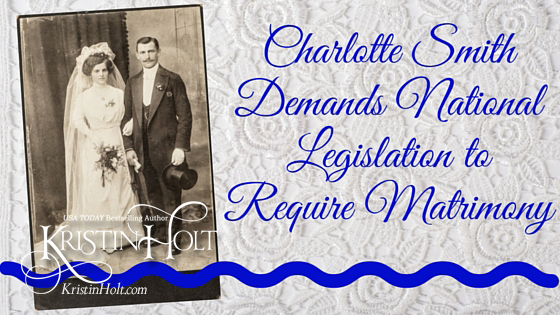
I endorse newspaper articles as an original source in researching Victorian-era America. Yet while I trust–for the most part–newspaper articles to be a reasonable representation of attitudes, circumstances, happenings, and differing opinions, I’m well aware that not everything in print is fact…at least as presented.
I came across newspaper articles mentioning Mrs. Charlotte Smith, presented as a rather ridiculous woman seeking legislation to force marriage upon the matrimony unencumbered. Three such articles follow, all of which are from credible, well-respected newspapers of the late nineteenth century. At the bottom, I’ll share more of who Mrs. Charlotte Smith was, the platforms she supported, the work she did–and cast an entirely different light on her nature than these newspaper reporters suggest.